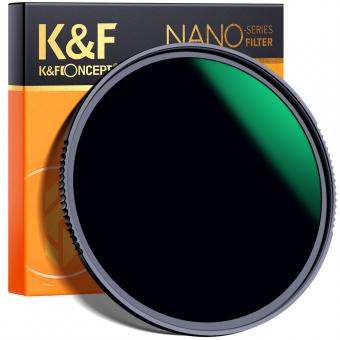What Magnification Is Needed To See Cells ?
The magnification needed to see cells depends on the type of cell and the level of detail required. Generally, cells are too small to be seen with the naked eye and require a microscope to be visible. A compound light microscope with a magnification of 400x is typically sufficient to see most types of cells. However, to see smaller structures within cells, such as organelles, a higher magnification of 1000x or more may be necessary. Electron microscopes can provide even higher magnification, up to 500,000x, allowing for the visualization of even smaller structures within cells.
1、 Microscopy Techniques for Cell Observation

Microscopy techniques are essential for observing cells, as they allow us to visualize the intricate structures and processes that occur within them. The magnification required to see cells depends on the type of microscope being used and the size of the cells being observed.
For light microscopy, which uses visible light to illuminate the sample, a magnification of at least 400x is needed to see individual cells. However, to observe the fine details of cellular structures, such as organelles and subcellular components, higher magnifications of up to 1000x or more may be necessary. Electron microscopy, which uses beams of electrons to image the sample, can achieve much higher magnifications, up to several hundred thousand times.
Recent advances in microscopy techniques have allowed for even greater resolution and magnification, such as super-resolution microscopy and cryo-electron microscopy. These techniques have revolutionized our understanding of cellular structures and processes, allowing us to visualize molecular interactions and dynamics at unprecedented levels of detail.
In summary, the magnification needed to see cells depends on the type of microscope being used and the level of detail required. Advances in microscopy techniques continue to push the boundaries of what we can observe, providing new insights into the complex world of cellular biology.
2、 - Light Microscopy

Light microscopy is a widely used technique in biology to visualize cells and tissues. The magnification required to see cells depends on the size of the cells and the level of detail required. Generally, cells are too small to be seen with the naked eye, and a magnification of at least 100x is required to visualize them. However, to observe the internal structures of cells, a higher magnification is needed.
The magnification of a light microscope is determined by the combination of the objective lens and the eyepiece. The objective lens is the lens closest to the specimen, and it provides the initial magnification. The eyepiece is the lens closest to the observer's eye, and it further magnifies the image produced by the objective lens.
To visualize cells, a compound microscope with a magnification of at least 400x is recommended. This magnification allows for the observation of individual cells and their internal structures, such as the nucleus, mitochondria, and cytoskeleton. However, to observe smaller structures such as organelles and viruses, a higher magnification of up to 1000x or more may be required.
It is important to note that the resolution of a microscope also plays a crucial role in visualizing cells. The resolution is the ability of a microscope to distinguish two closely spaced objects as separate entities. The higher the resolution, the clearer the image. Therefore, a microscope with a high magnification but low resolution may not provide a clear image of cells.
In recent years, advances in microscopy technology have led to the development of super-resolution microscopy techniques, which allow for the visualization of structures smaller than the diffraction limit of light. These techniques have revolutionized the field of cell biology, enabling researchers to observe cellular structures and processes at unprecedented levels of detail.
3、 - Electron Microscopy

What magnification is needed to see cells? The answer depends on the type of microscope being used. Light microscopes, which use visible light to magnify objects, can typically magnify cells up to 1000 times. However, to see the fine details of cells, such as organelles and cell structures, higher magnification is needed. This is where electron microscopy comes in.
Electron microscopy uses a beam of electrons instead of visible light to magnify objects. This allows for much higher magnification and resolution than light microscopy. With electron microscopy, cells can be magnified up to 100,000 times or more, allowing for the visualization of even the smallest structures within cells.
In recent years, advancements in electron microscopy technology have allowed for even higher magnification and resolution. Cryo-electron microscopy, for example, allows for the imaging of biological samples at near-atomic resolution. This has led to new insights into the structure and function of cells and has revolutionized the field of structural biology.
In summary, to see cells and their structures at high magnification and resolution, electron microscopy is needed. With advancements in technology, electron microscopy continues to push the boundaries of what we can see and understand about the microscopic world.
4、 - Confocal Microscopy

Confocal microscopy is a powerful imaging technique that allows for the visualization of cells and tissues in three dimensions. Unlike traditional microscopy, which captures images of the entire sample, confocal microscopy uses a laser to scan a thin section of the sample at a time. This allows for the capture of high-resolution images that can be reconstructed into a 3D image of the sample.
The magnification needed to see cells using confocal microscopy depends on the size of the cells and the level of detail required. In general, a magnification of 40x to 100x is sufficient to visualize cells and their structures. However, higher magnifications may be needed to visualize smaller structures within the cells, such as organelles.
It is important to note that confocal microscopy is not limited by magnification alone. Other factors, such as the quality of the sample preparation and the sensitivity of the detector, can also affect the quality of the images obtained. Additionally, advances in technology have led to the development of super-resolution microscopy techniques, which can achieve resolutions beyond the diffraction limit of light. These techniques have enabled researchers to visualize structures within cells at the nanoscale level.
In summary, a magnification of 40x to 100x is typically needed to visualize cells using confocal microscopy. However, other factors such as sample preparation and detector sensitivity can also affect the quality of the images obtained. Advances in technology have also led to the development of super-resolution microscopy techniques, which can achieve resolutions beyond the diffraction limit of light.





































